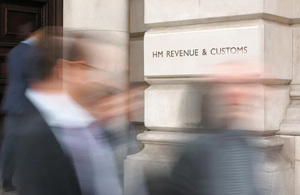HMRC urges loan scheme users to come forward now
Users of disguised remuneration schemes need to come to HMRC with information to settle their affairs before 5 April or face the loan charge.

HMRC is encouraging users of disguised remuneration (DR) schemes to come forward to settle their tax debt by 5 April.
The majority of users will pay less by settling now than if they wait until the loan charge comes into force. Anybody who wants to settle their taxes should contact HMRC now and send all the information required by 5 April at the latest.
People affected by the loan charge can still benefit from the published settlement terms if they contact HMRC with a genuine intent to settle before 5 April and provide the relevant information, even if settlement cannot be reached until after that date.
By 5 April, scheme users should send through:
- their name and tax reference numbers (UTR), or National Insurance number
- the amount of loans received in each tax year
- whether you want to claim a benefit in kind offset - if so, how much and for which years
- the name of the employer who provided the loans
Anyone earning less than £50,000 and no longer involved in tax avoidance can spread their payments over 5 years minimum and won’t have to provide detailed supporting information about income and assets. For anyone earning less than £30,000, the spread of these payments can be extended to 7 years minimum.
An HRMC spokesperson said:
HMRC wants to do all that it can to help people get out of avoidance for good. We’re appealing to those who haven’t come forward to settle their disguised remuneration debts to do so now and send us the required information by no later than 5 April.
If you’re concerned about your ability to pay, it’s still better to contact us now – we have a range of flexible payment options to consider, and no option will require you to sell your main home to pay off your debt.
People affected by the loan charge don’t need to pay the full amount in one go or by 5 April 2019. HMRC can help anybody who thinks they will have difficulty paying what they owe by spreading payments over a number of years.
There is no maximum time period for payment arrangements. HMRC will not force anyone to sell their main home to pay their disguised remuneration debts.
To support loan charge users, HMRC set up a dedicated helpline, complemented by a team to provide extra support to those who need it. It has redeployed staff to support scheme users and announced simplified payment arrangements.
As part of its continued work in this area, HMRC has announced that it is expanding its Needs Extra Support service to vulnerable customers when it looks into their tax affairs.
DR schemes are contrived arrangements that pay loans through a third party, often an offshore trust, in place of ordinary remuneration with the sole purpose of avoiding Income Tax and National Insurance contributions.
The loans are provided on terms that mean they are unlikely to be repaid, so they are no different to normal income and are, and always have been, taxable. HMRC’s position on DR schemes has always been clear that DR schemes are designed to avoid tax and simply do not work.
Further information
- Customers can contact HMRC through the dedicated helpline on 03000 534 226, or email us or speak to their usual HMRC contact.
- The loan charge, which was first announced in the 2016 Budget, will apply where people have not settled their tax and have DR loans made since 6 April 1999 that remain outstanding at midnight on 5 April 2019.
- Where people do not settle their tax and have loans outstanding they will have to pay the loan charge. Individuals who have not agreed a settlement or repaid their loans before the loan charge arises should submit an information return to HMRC, setting out their loan balance by 30 September 2019. They should also file their 2018 to 2019 Self Assessment tax return and pay the loan charge by 31 January 2020.
- Where the scheme user was in an employment-based loan scheme and the employer still exists and is UK-resident, they should tell the employer what the outstanding loan balance is by 15 April 2019. The employer will need to calculate the PAYE liability on that loan charge income, and make payment to HMRC either by 19 April 2019 (by post) or 22 April 2019 (online). The employer will need to report the loan charge amount to HMRC via Real Time Information from 20 April.
- HMRC has recently warned about new tax avoidance which claim to circumvent the loan charge. These will not work and people should not consider using them. Read Our recent Spotlight is on GOV.UK.
- The government published a report on time limits and the charge on disguised remuneration loans last week.
- You can read further information on disguised remuneration schemes and HMRC’s issue briefing on disguised remuneration charge on loans